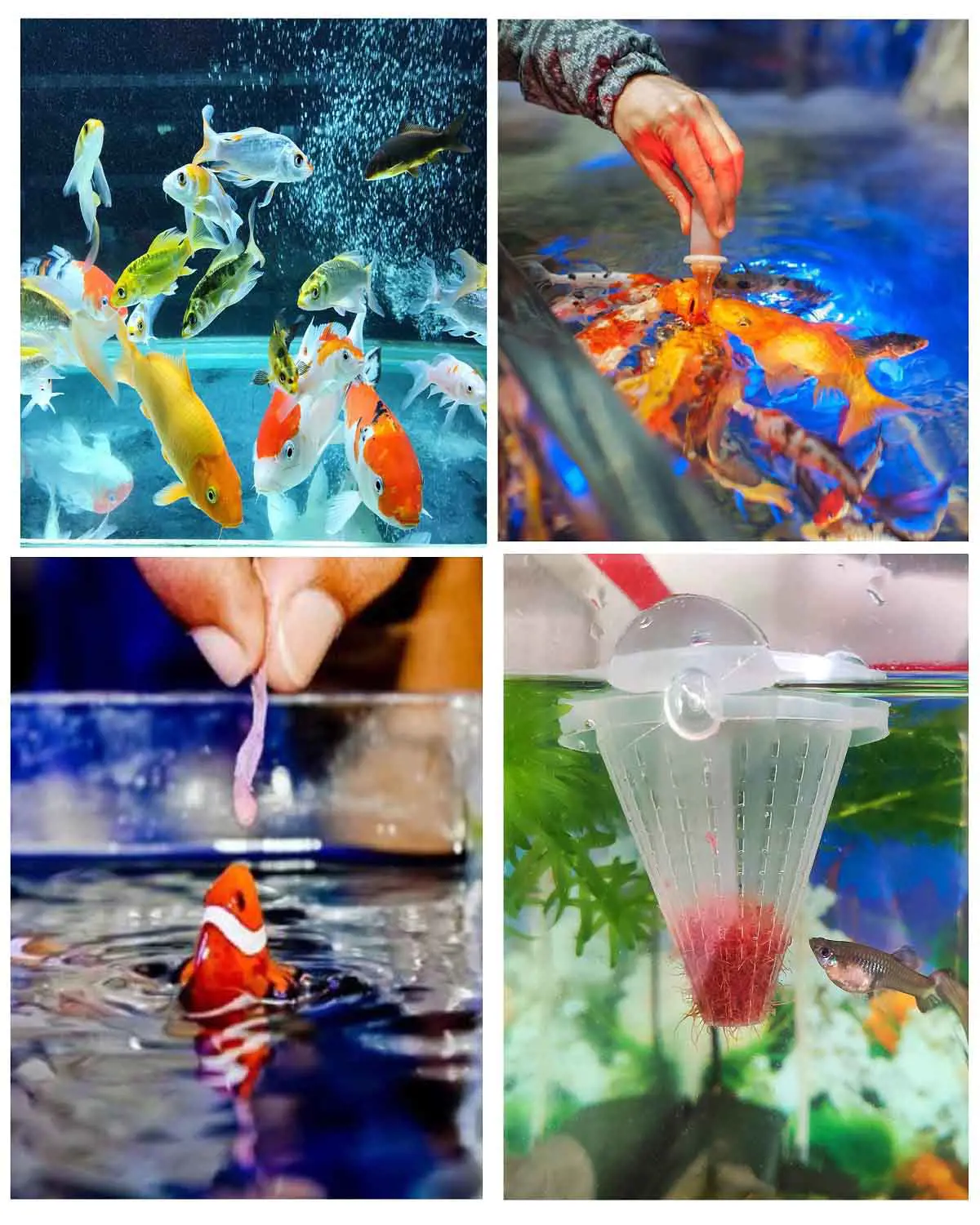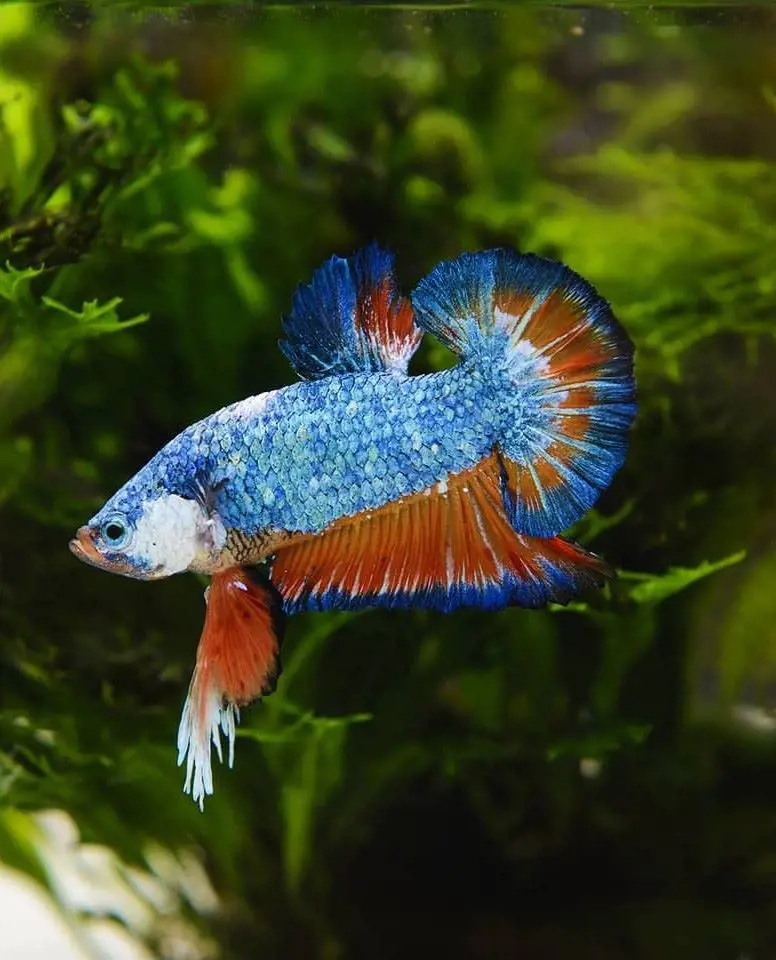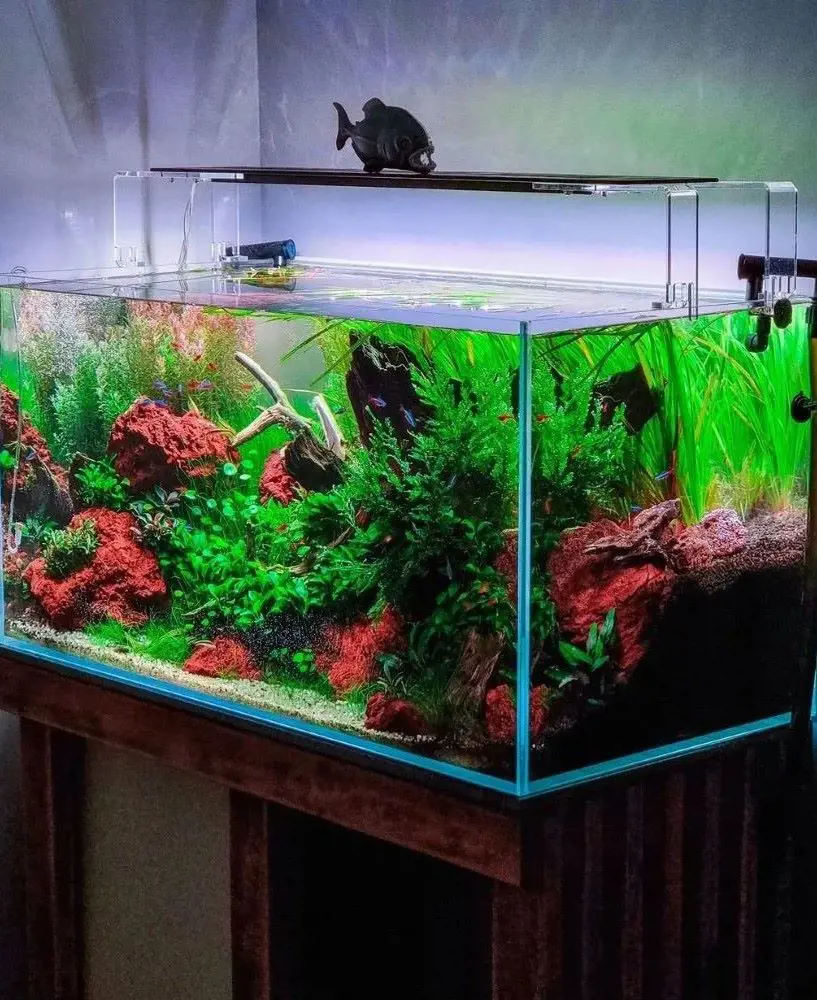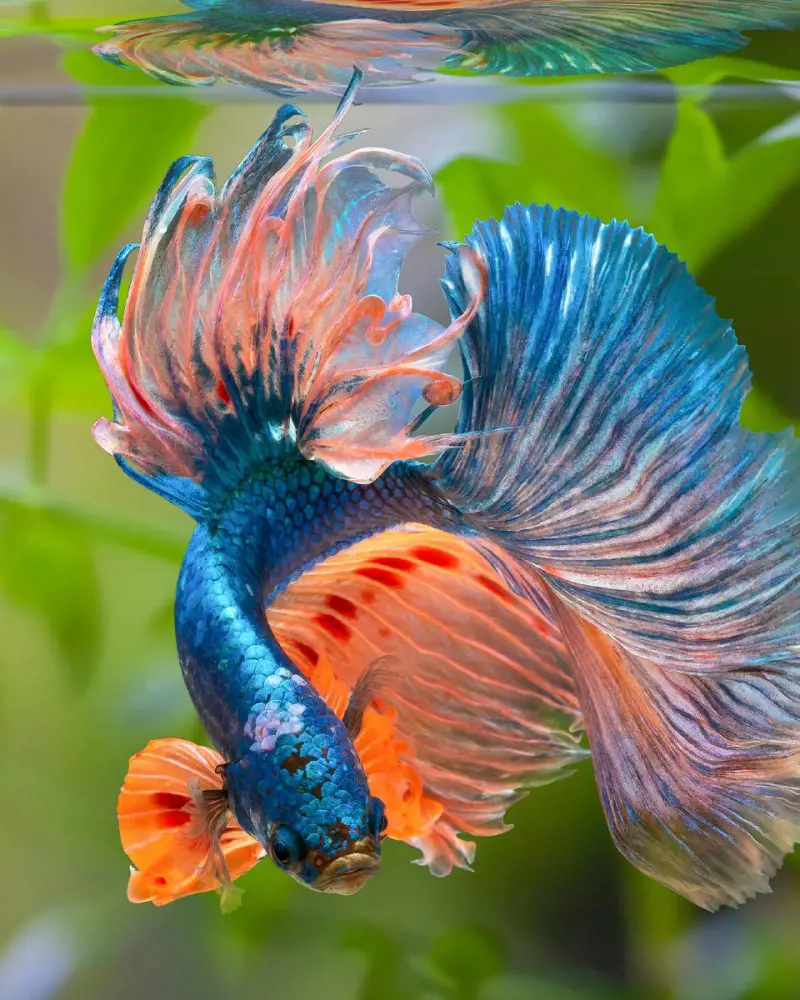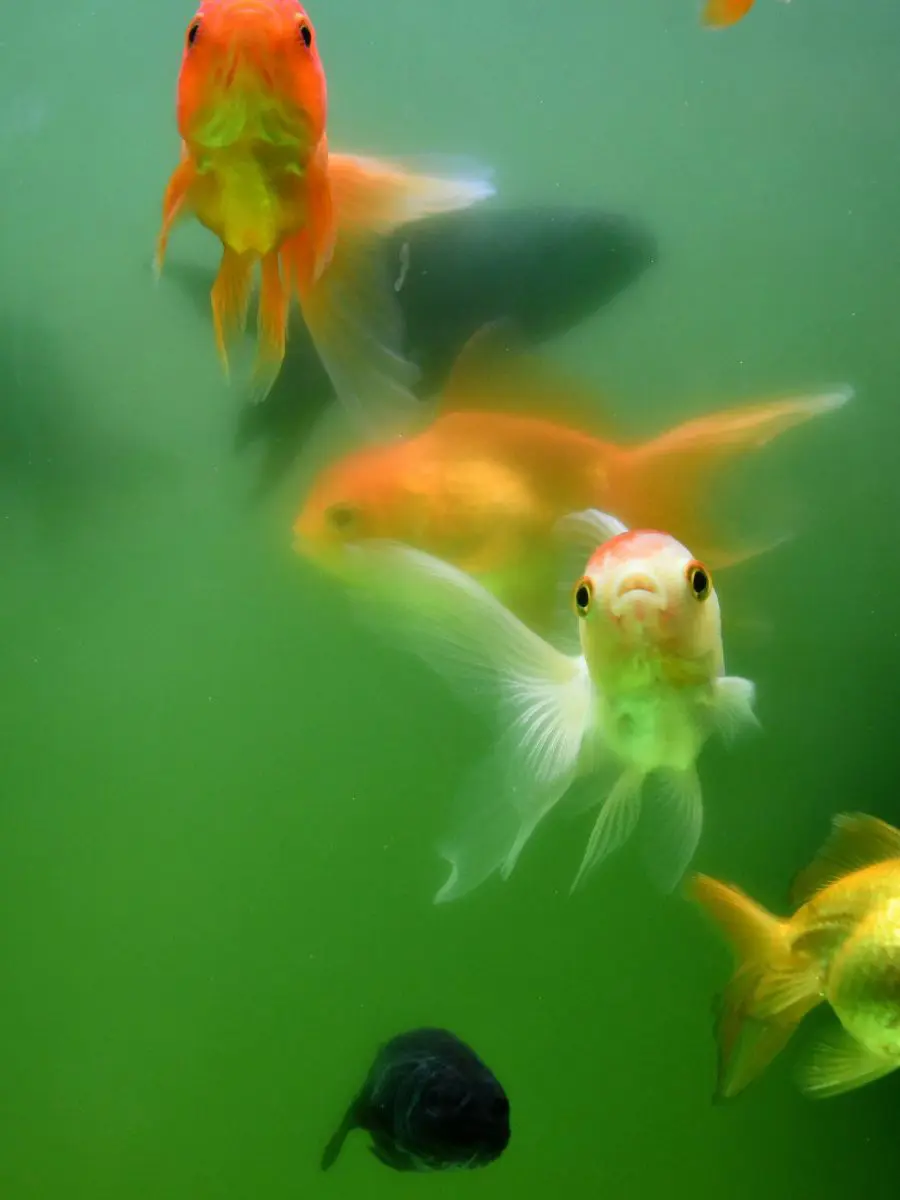Swordtail Fish Care Guide And Tank Mates
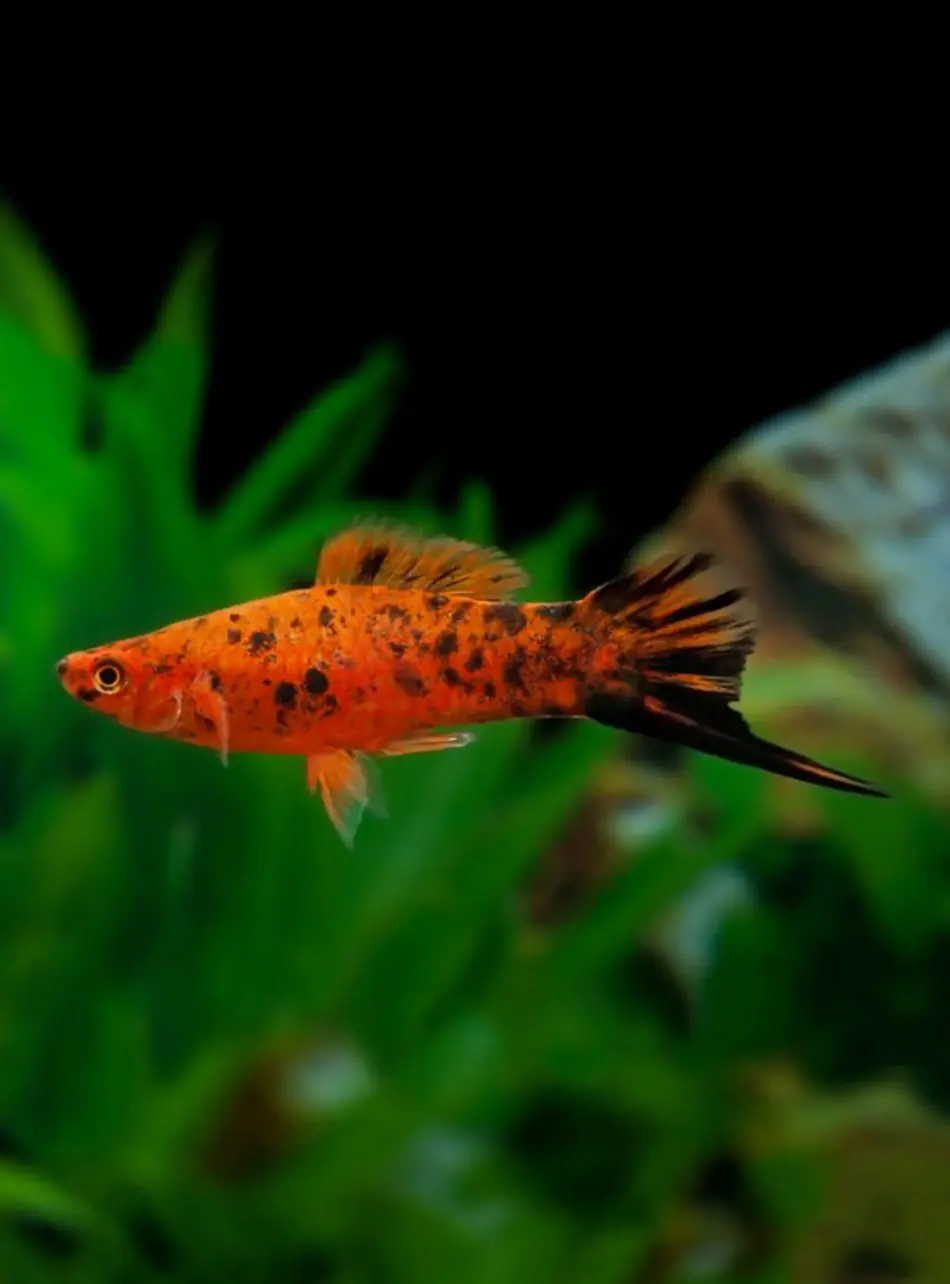
Ask any aquarist, and you can be sure that swordtail fish will come up when discussing the best-selling freshwater species currently available in their hobby. These livebearers are native to the Central United States and are named after the male's top tail in a half-moon-shape resembling a homed weapon.
If you are thinking of getting a swordtail fish in the aquarium, then before doing so it is essential to know about its care requirements and compatibility with other fishes.
Overview
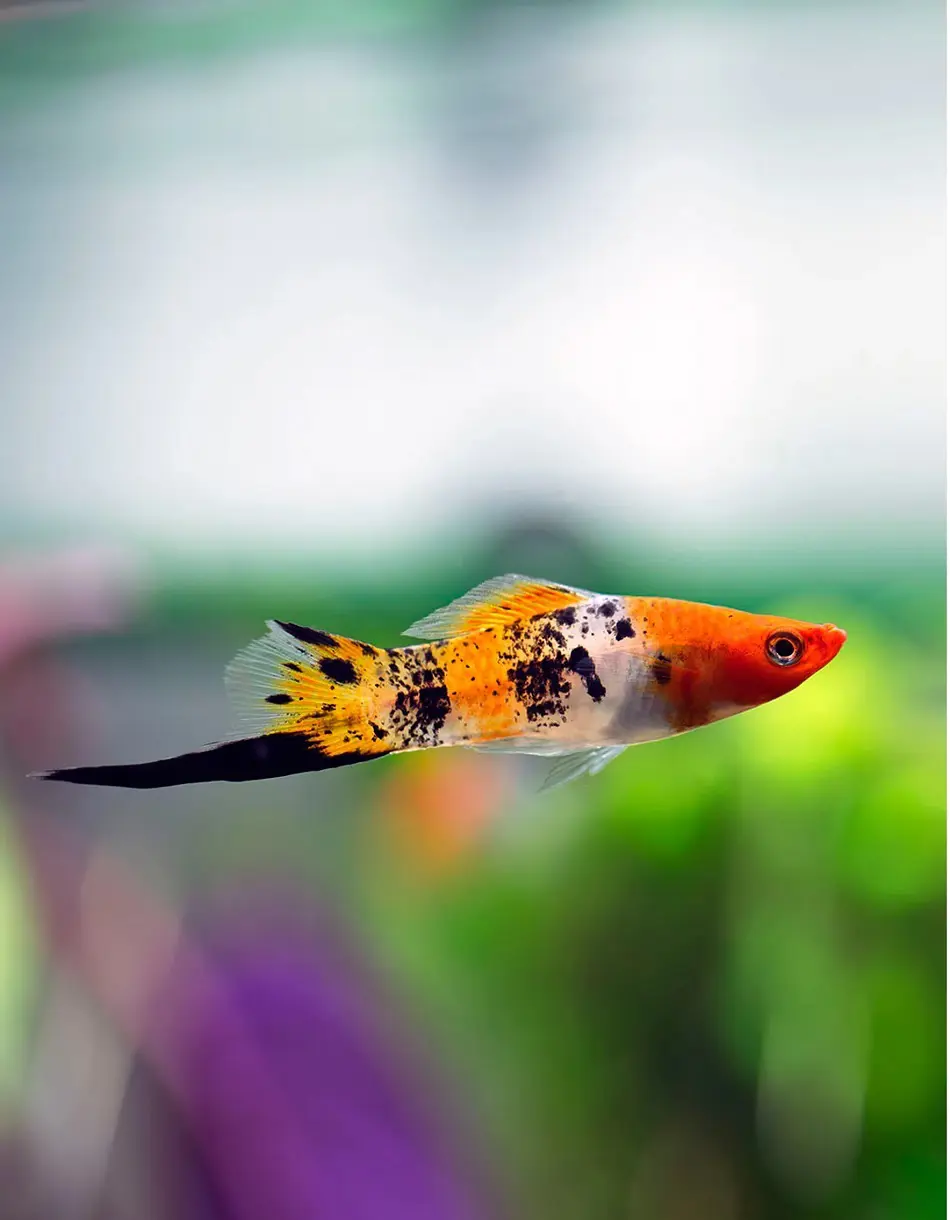
Swordtails are robust fish and do well in nearly all conditions, making them an ideal choice for both the novice aquarium keeper and seasoned expert. They are capable of reaching around 4-6 inches in size and males tend to be a little smaller than females.
They tend to live about 3-5 years on average but some with good care can even exceed that. Their size and constant energy flow can limit them in a tank or can afford to keep them happy.
Tank Setup
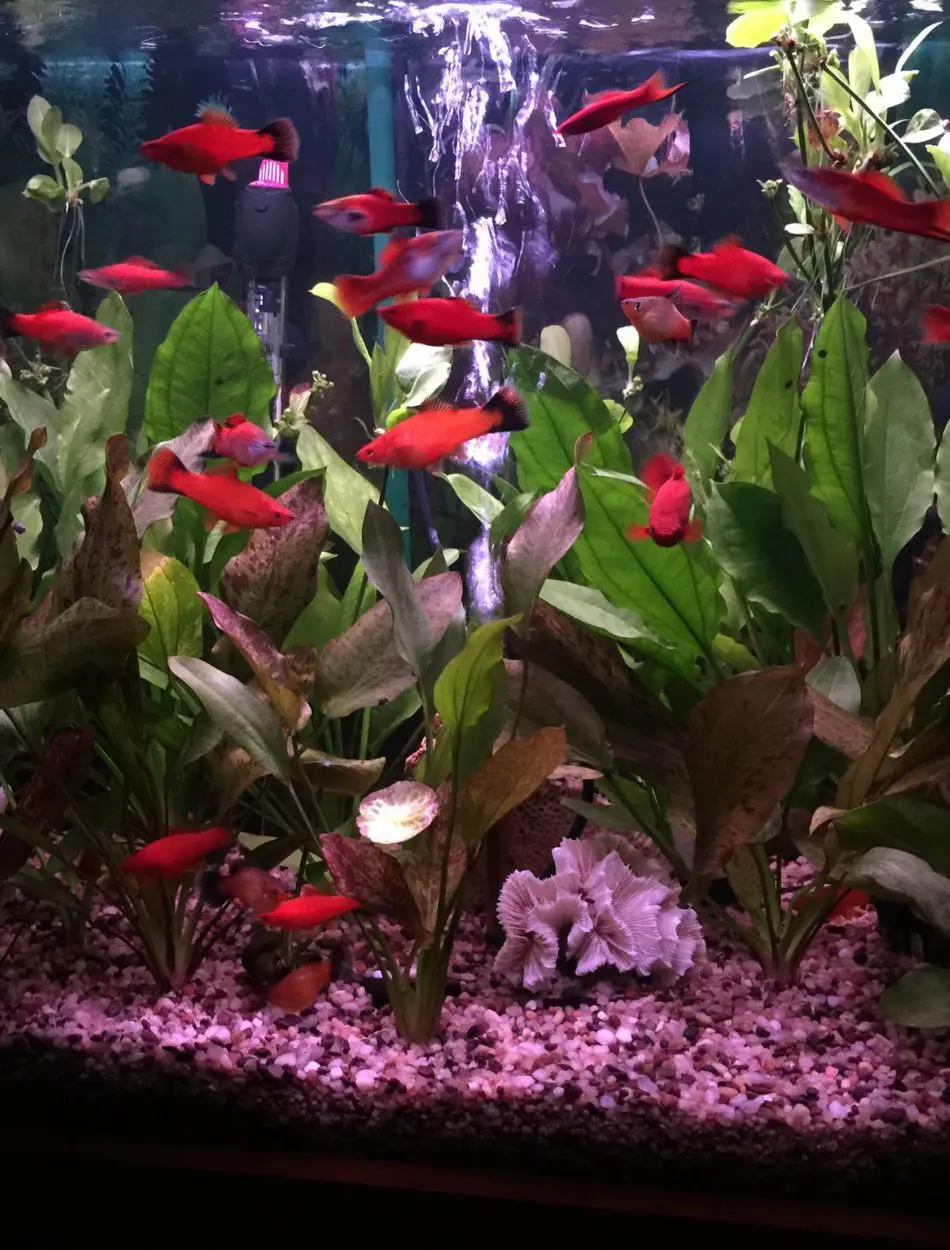
Wellbeing instead of your swordtail fish depends on the climate created.
A suitable tank environment is selecting the perfect length, ensuring a healthy amount of water volume, and offering an optimal habitat.
Tank Size
A 20-gallon tank is the smallest suggested for swordtails but larger is always better. Although swordtails are ichthyolites, a small tank will not grant them sufficient space to move freely and they will bear vulnerabilities related to stress.
The best types of tanks are long rectangular ones, not shallow tall aquariums that take up a huge amount of floor, offering more horizontal swimming rooms as needed for swordtails.
Water Parameters
Swordtails prefer a water temperature in the range of around 72-82°F (22-28°C), which is on the warmer side for most typical tropical fish. Swordtail's preferred pH ranges from 7.0 to 8.3, so your water shouldn't become too acidic if you do decide to keep swordtail fish at home in an aquarium!
Also, it does not do very well in soft water from 5-10 dGH as their natural habitat has more mineral content to the same and prefer water from 10-25dGH.
Filtration and Aeration
Swordtails are messy eaters, so an effective filter is necessary to keep the water clean. Add a biofilter system that provides Mechanical and Biological Filtration, which ensures crystal-clear water, free from harmful toxins.
Good aeration is also essential so have an air pump going or point the output of your filter near the top to promote a good O2 exchange.
Substrate and Decor
Use gravel or sand to the substrate, which is perfect as it imitates their natural habitat and ensures their delicate fins. Swordtails thrive in a well-decorated aquarium with lots of hiding spaces, so combine living or artificial plants, rocks, and tree roots.
This not only makes the tank look better but also gives fish hideouts and cover, which helps to reduce stress while promoting natural behavior.
Dietary Requirements
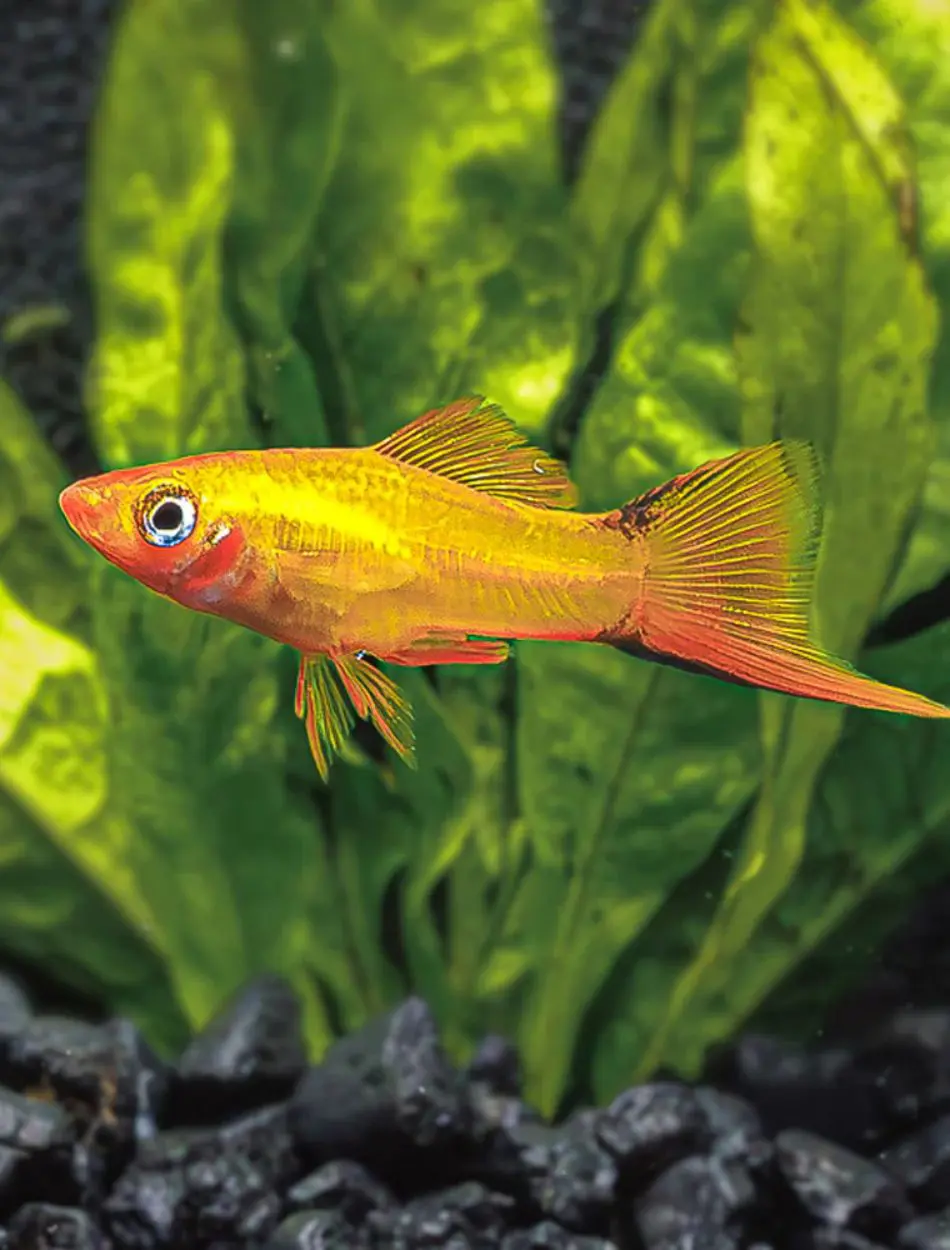
Swordtails are omnivore feeders and have a voracious appetite. So maintaining a proper diet is critical for keeping them healthy as well as bursting with color. Feed good quality flakes or pellets as a staple diet, offering the necessary nutrition.
Their diet must be enriched with live or frozen foods such as brine shrimps, daphnia and blood worms to supplement the protein. Remember to offer blanched vegetables like spinach, zucchini, or peas as an extra source of fiber and a way to prevent digestive problems.
Feed your swordtails in small amounts, 2 to 3 times each day, and let them finish their meals within a couple of minutes. If the dangers of overfeeding are leading to water quality woes and health issues, why not feed smaller amounts more frequently? Check their eating pattern and give them an amount of food they can consume so that it does not create waste in the tank.
Ideal Tankmates
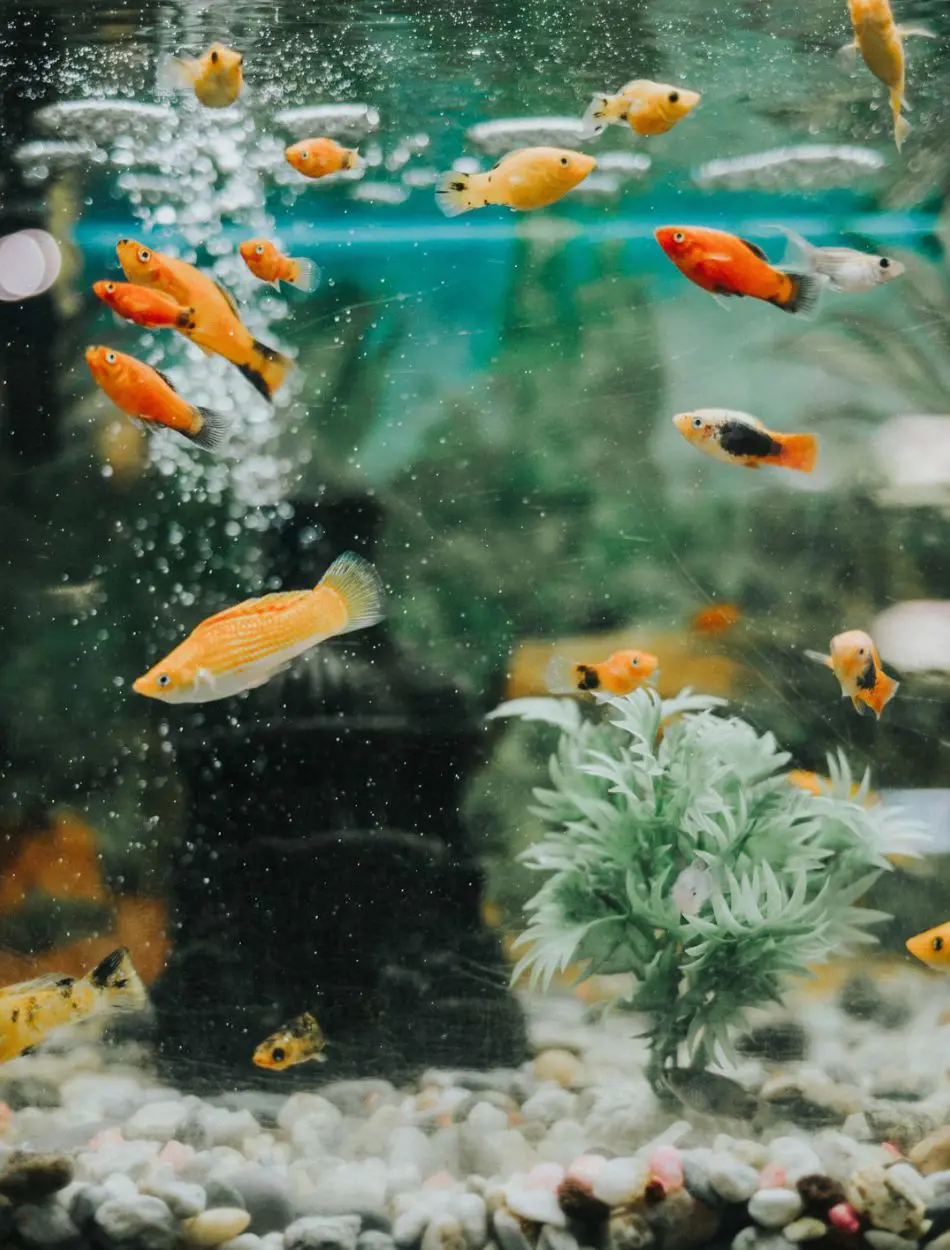
Ideal Tankmates
When choosing tankmates for Swordtail fish (Xiphophorus helleri) make sure you opt for species with the same kind of water language and temperaments. Swordtails are peaceful but active community fish, so they should not be housed with aggressive species.
Platies (Xiphophorus maculatus)
Your platy is related to the swordtail and comes with similar care requirements and peaceful nature. They can survive in the same water, so they are perfect little pals.
Both species are very active swimmers and will look great swimming around together flowing in a community tank with similar colors.
Mollie (Poecilia sphenops)
Mollies are also a workable species of lifebearer, similar to swordtails. Basically, they like a bit of alkalinity in their water which is somewhat ideal for swordtails as well.They
Mollies are peaceful fireballs that cannot sit still and love to explore a tank, as well as interact with their fellow tankmates.
Guppies (Poecilia reticulata)
Since guppies share a preference in water with the swordtails, as they are related to them and both species thrive best at 68-82°F. They should be smaller fish so that you include small colorful guppies.
Guppies are peaceful, schooling fish and will add color to the aquarium as well as activity without stressing out swordtails.
Corydoras Catfish (Corydoras spp.)
Corydoras, being peaceful and unobtrusive bottom dwellers, are perfect companions for swordtails. They will clean up the tank and do not have to compete with swordtails for food or space since they live in different parts of it.
Neon Tetras (Paracheirodon innesi)
The tank mates of Neon Tetra should be community fish that are peaceful and not otherwise aggressive. They prefer the same water temperature and pH as swordtails. These active swordtails have brighter colors and schooling habits that make an eye-catching contrast.
Species to Avoid
It is important to keep swordtails alone, with the right fish and ones that will now stress them or injure their tails. Here are the species to avoid:
Betta Fish
Aggressive, particularly to other bright or long-finned fish such as Swordtails.
Angelfish
Some angelfish are likely to invoke territorial behavior and can be "nippery" to some swordtails, especially when space is limited.
African Cichlids
They are territorial and aggressive, so they may harass or even injure swordtails.
Tiger Barbs
The fin-nipping habits of other species in the tank can stress and injure swordtails.
Oscars
They are highly aggressive and much larger where they can cause a lot of damage to the defenseless swordtails.
To maintain a suitable habitat you must be very careful in selecting tankmates so that your new aquarium residents can live together peacefully without difficulty for you.
Seasonal Impact
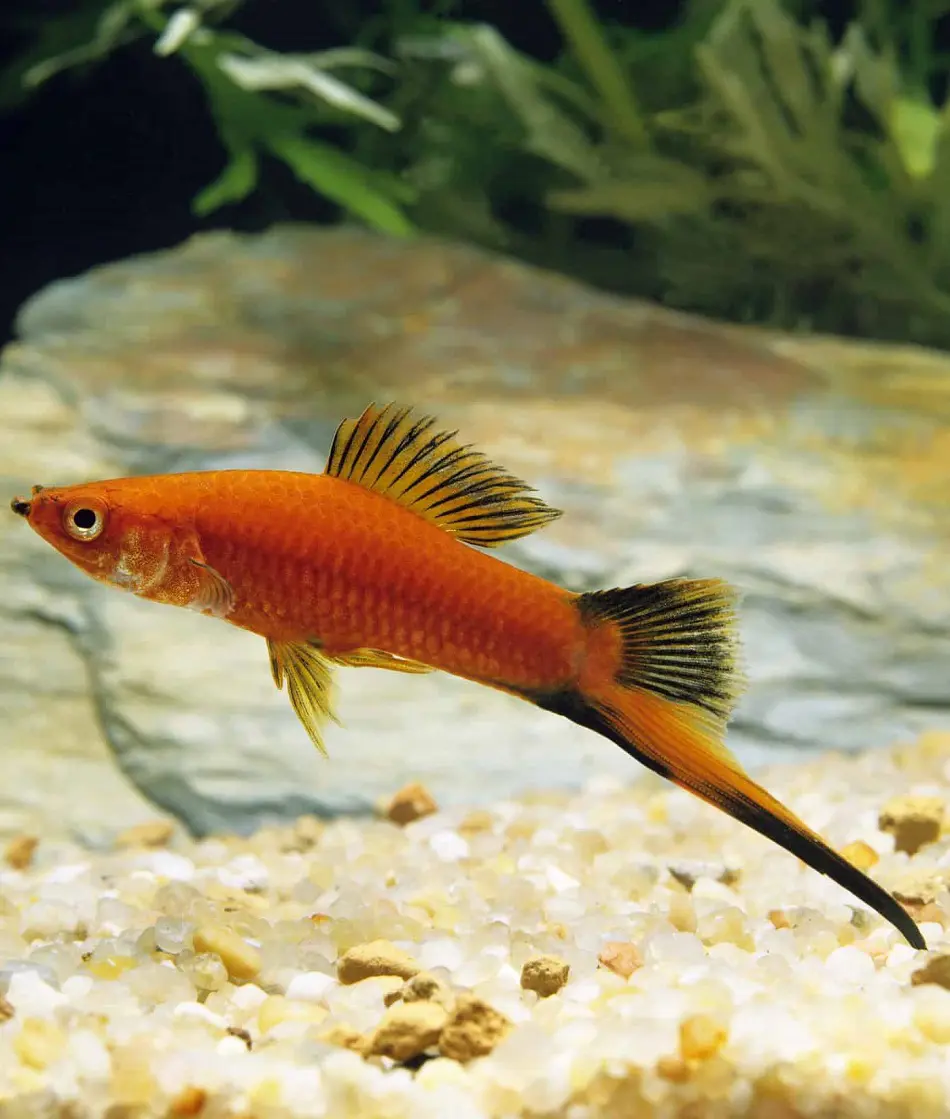
Like most aquatic species, swordtail fish are also affected by seasonal variations which can impact their behaviour, health and overall well-being. Adjustments in care are necessary because dependable fish have instead incredibly hardy adaptations to a variable environment, with temperature, photoperiod and water quality changing throughout the year. Knowledge of these seasonal fluctuations and the knowledge relevant for maintenance in garden fish are critical to maintaining swordtail fish healthy or active throughout the year.
Temperature Control
Swordtail fish are also very sensitive to temperature changes, especially in the colder months, which can cause stress and keep the tank temperature stable with a heater. Fans and air conditioning can help in summer to keep the tank from getting too hot.
Seasonal Feeding Adjustments
Swordtails become somewhat dormant and they will eat a lesser amount during the colder months. Give them enough food but also match it to the activity level of aquarium plants in winter. If they are active and breeding (spring/summer), you may need to feed them more often.
Breeding Behavior
It is the warming and lengthening of days that induces swordtail fish to engage in breeding behavior, much like with our species. Where males grow brighter and more active in mating. Provide a proper diet and environment with clean water to obtain healthy breeding results and fry.
Water Quality Management
Some seasonal changes can alter the quality of water in particular ways, especially during summer. Warm temperatures decrease the amount of dissolved oxygen and increase evaporation. The water should be changed regularly; In the summer, more frequently due to its effects on air conditions.
Year-Round Stability
And the good news is, by adapting care routines from season to season you can maintain great success by keeping swordtail fish all year. The following are the main reasons: The stability of temperatures, a well-balanced feeding and regular water parameters being maintained.
Swordtail Fish Behavior Overview
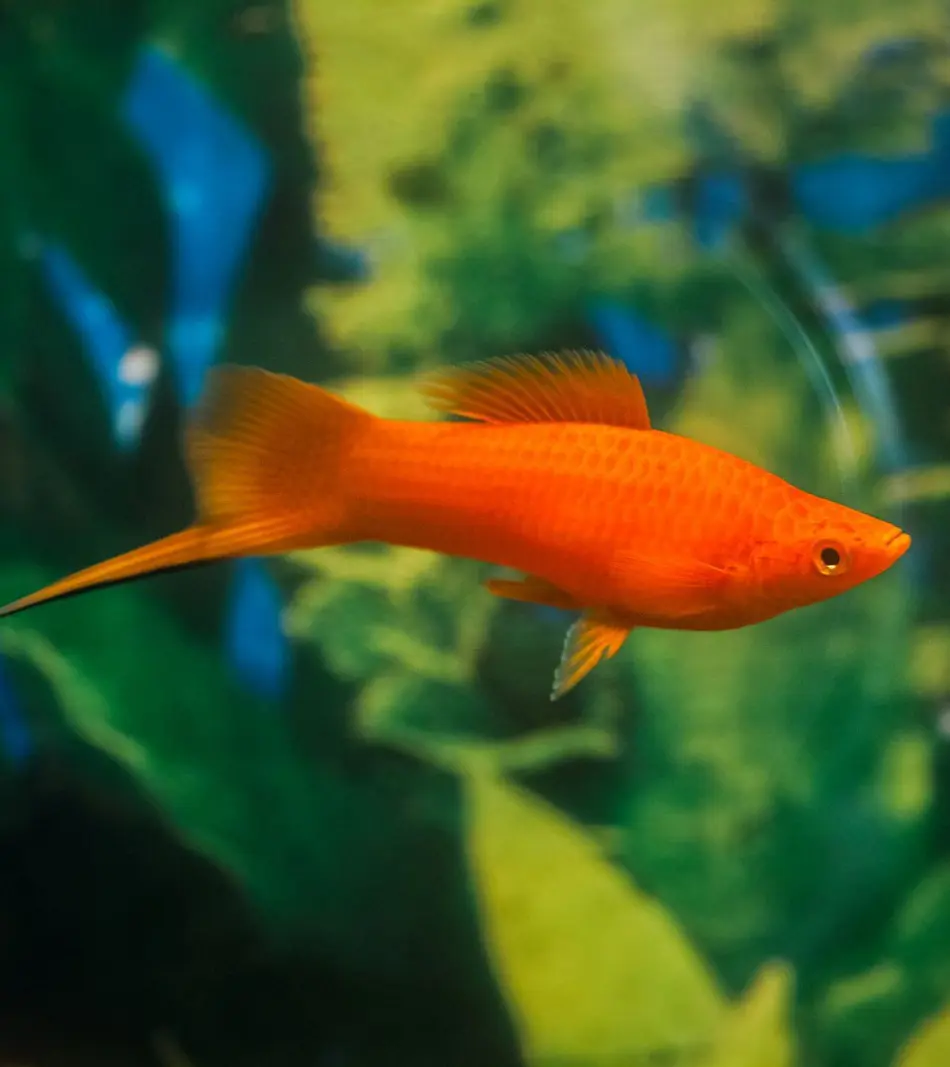
Swordtail fish are very active and do well in a community aquarium. You can cater to this if you know some of their natural behaviors and try your best to offer an environment that promotes them keeping fish healthy.
This includes everything from how a fish behaves in light of social interactions, mating, or swimming to helping you understand how they fit into your tank.
Stay Active Swimmers
Swordtails are very active swimmers and they tend to explore all corners of the tank. This continuous motion brings the aquarium to life but also requires a large swimming area for freer movement.
Social Creatures
These fish are schooling social creatures. It is for this reason that it is best suited to a small community of other fish, and in these circumstances will establish her ranking well.
This allows them to have companionship and relieve their stress as well.
Peaceful But Territorial
While swordtails are mostly peaceful, the same cannot always be said for their male counterparts who tend to become territorial, particularly in mating. Giving the piggies plenty of places to hide and share a coop can lessen aggression among each other.
Livebearing
Swordtails are an example of a lifebearer, this simply means they give birth to living fry instead of laying eggs. This behavior will lead to prolific reproduction, so you should have a plan on how many pups each are going to be allowed or housed separately.
Top-dwelling
Surface-dwelling swordtails typically remain at the very top of aquarium water columns. For this reason, they are great candidates for added activity in the higher parts of your aquarium.
Mating Displays
Male swordtails often engage in sophisticated soft-shoe numbers to court females. This involves chasing and nipping at the other fish’s fins, especially their unique swordtail. But displays like this are harmless and part of their natural behavior.
Learning about these behaviors will teach you the best ways to provide a better, more stimulating world for your swordtail fish and they can carry on living a healthy life in your tank.
Breeding Swordtails
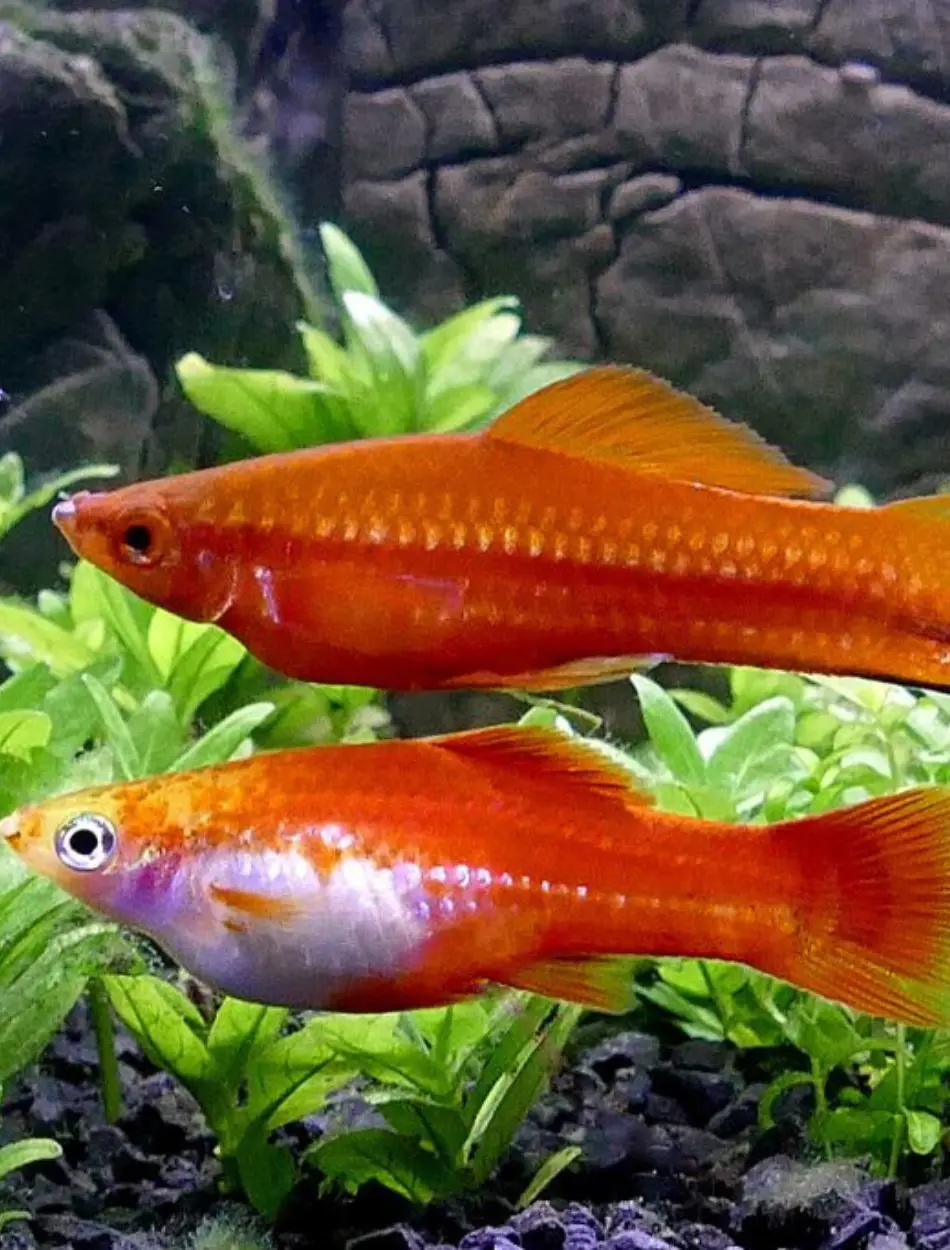
Unlike many other fish, swordtails are lifebearers and give birth to fries that swim freely in the water. They are quite simple to breed and will readily do so in favorable conditions.
Mating Behavior
Swordtails will reproduce frequently and a mature male and female swordtail can mate without any special intervention. Gestation is around 28-30 days and the female will release live young. Lots of plants and hiding places in the tank will help to give the fry a better chance, and adult fish, including both parents, like to eat their own young.
Breeding Tank
If you are a dedicated swordtail fish breeder, then it is better to get a separate breeding tank so that the fry will be safe from the other male adult fishes. fishThe breeding tank should be densely planted with plants and have a sponge filter to prevent the fry from getting sucked into an external power/head type of filter.
Once the female has been borne, move her back to your main tank and leave the fry in a breeding net or trap until they have grown large enough for a relatively safe introduction into the community tank.
Fry Care
Frys are newborn fish, they're so small that if you want to successfully bring a fry into adulthood then there are special kinds of specific care involved that feed them up to four times a day with small amounts of crushed flakes or specialized fries' food.
Get them acclimated to a diet similar to that of the adult swordtails as they get older. The fry survives and grows better if there are many hiding spaces or excellent drinking water quality.
Health and Common Issues
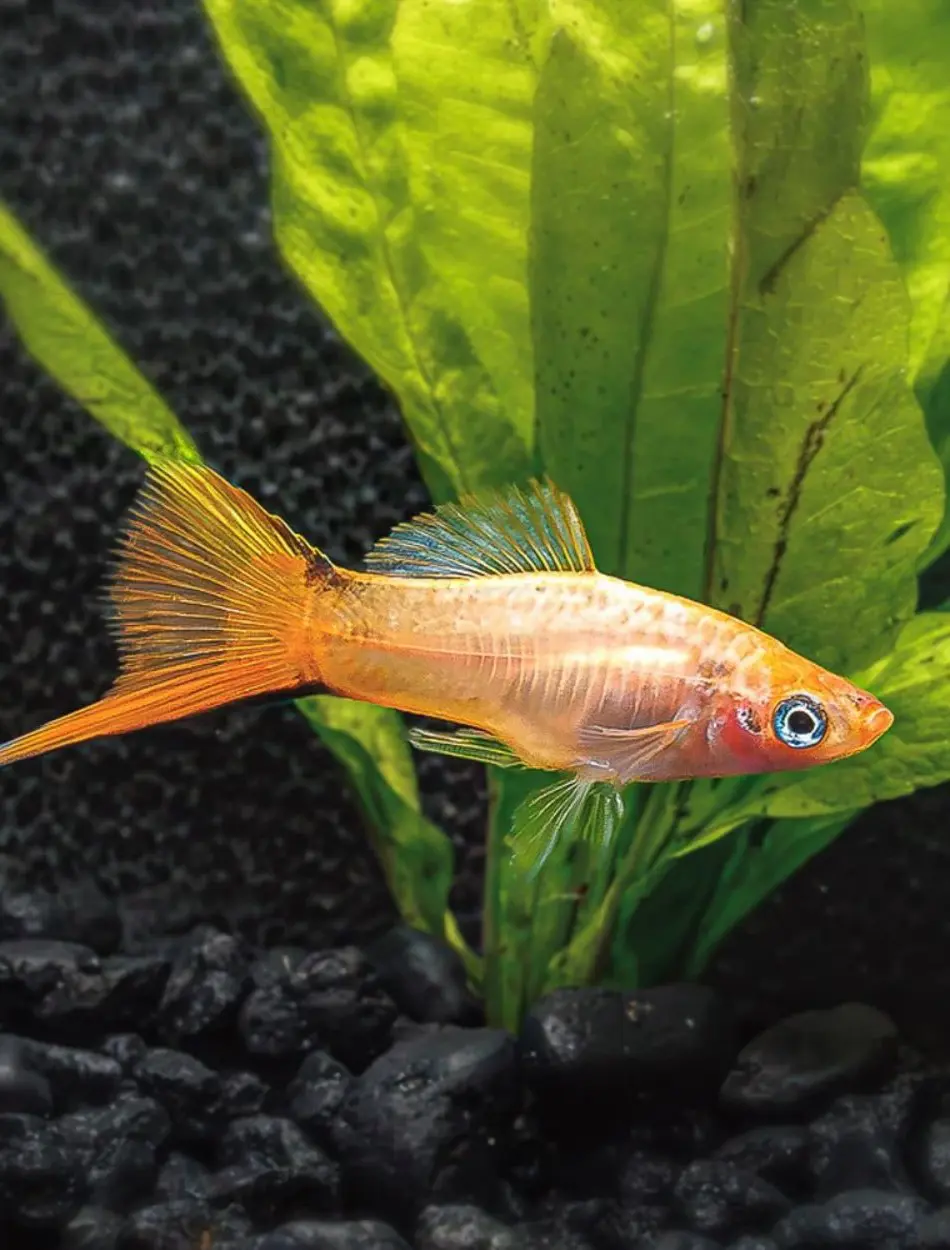
Swordtails are a hardy species for the most part, but they also suffer from some of the more common fish diseases. If you are vigilant and give them proper care, then these issues can be reduced as well their fish will also remain healthy.
Ich (White Spot Disease)
A tiny white spot all over the body and fin of the fish. It can be brought on by stress, bad water quality, or rapid temperature changes. Both commercial Ich medicines and slightly elevated water temperatures may be used to treat them very early in the game.
Fin Rot
Usually the result of poor water quality or bacteria in a tank, fin rot can turn beautiful fins into shreds and cause discoloration. Unaddressed, it has the potential to manifest itself as a far more dire problem. Treating water and getting rid of bacteria can help the healing process.
Swim Bladder Disorder
This disorder is caused by over-feeding or poor water quality. Symptoms can be ameliorated by reducing feeding and adjusting the diet.
Ammonia Poisoning
This is the biggest killer and can stress them out which could lead to other health problems. Accurate water testing and frequent tank maintenance play an important role in prevention.
Dropsy
Dropsy is a bacterial infection leading to fluid buildup and may be caused by poor water or stress. This can be prevented by maintaining cleanliness in the tank and minimizing stress factors.
Fungus
Fungal Infections may produce signs such as coated cotton mouth, fin rot, and body slime because of bad water quality or poor cleanliness. Previous
Regular Maintenance
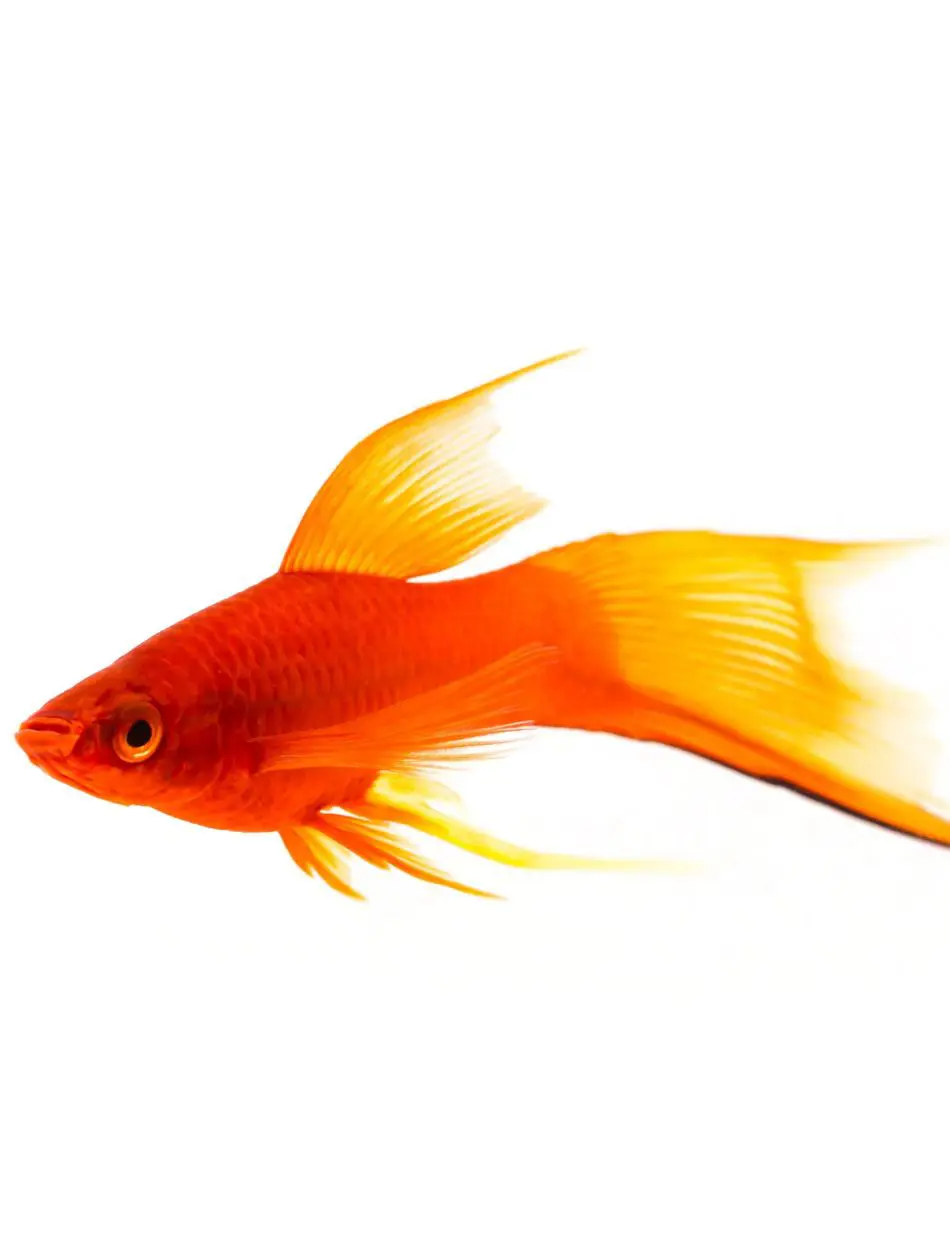
If you want your fish tank to be alive & healthy then don't forget some regular work like checking the water quality, changing the water from time to time, and cleaning the tank.
Water Changes
To maintain a conducive environment, carry out weekly water changes of 25-30% which help you to clean and stabilize the temperature. Changing the water regularly will help to eliminate waste, excess food and toxins that can build up in your fish tank.
When you mix tap water, add a water conditioner as it helps remove any harmful chemicals that may be present, such as chlorine.
Tank Cleaning
The process involves changing water and cleaning substrates, decorations, and filters to avert waste buildup. Using a gravel vacuum will remove debris from the substrate and clean the algae from the tank with an algae scraper if needed.
Observation
Keep a close eye on your swordtails every day to watch for stress, sickness signs, or anything out of the ordinary behavior. Early identification of disease makes treatment more likely to be successful and helps prevent the spread of problems to other fish. Observe their eating, swimming, and general behavior; react if there is an alteration.
Top Lists

